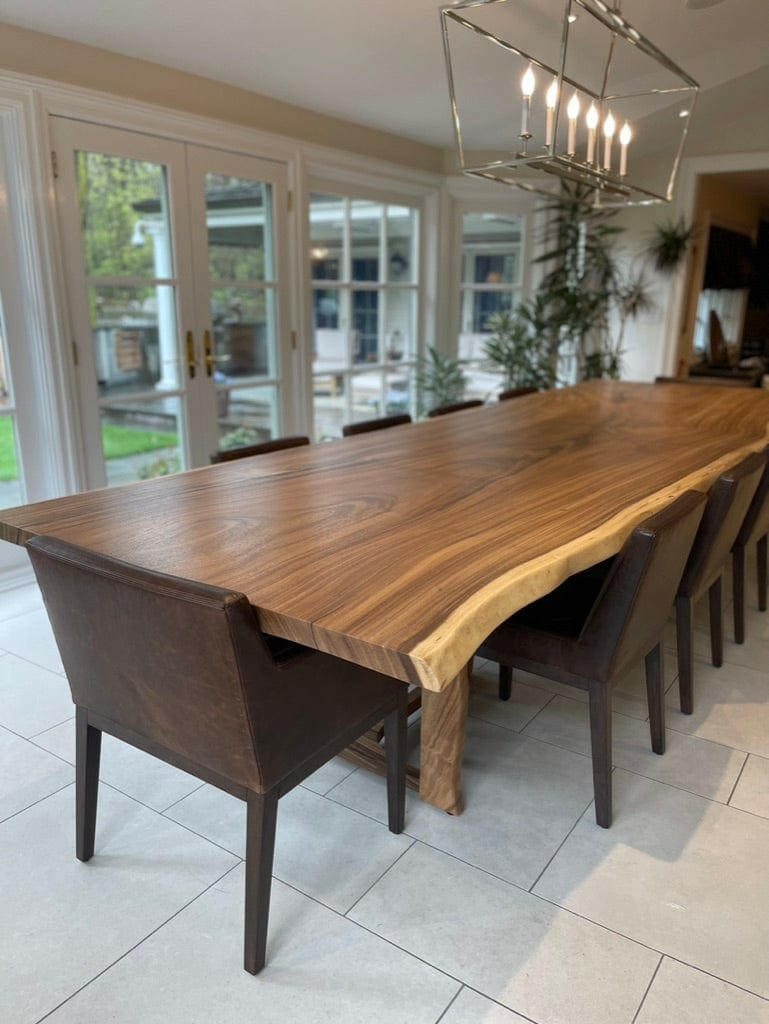Dining Room Table Legs: What to Think about Before You Buy
Dining Room Table Legs: What to Think about Before You Buy
Blog Article
A Comprehensive Look at Eating Table Leg Styles: Locating the Suitable Match
Choosing the appropriate dining table leg design is important for both aesthetic appeal and functional functionality. For those with bigger tables, trestle legs ensure strong assistance, whereas hairpin legs introduce a mid-century contemporary vibe with their minimalist style. The x-shaped legs blend modern style with improved security.
Standard 4 Legs
Amongst the different kinds of table leg styles, the typical four-leg style stays an ageless choice for many families. This timeless setup provides a harmonious mix of capability and appearances, making it a seasonal favorite. Four legs give well balanced support, making certain the table stays steady and qualified of birthing significant weight. This is specifically useful for homes that often hold big events or utilize their table for several objectives, such as work or crafting.
From a visual viewpoint, the typical four-leg style can be easily adapted to numerous indoor designs. Whether crafted from timber, metal, or a mix of products, these legs can be elaborately carved, streamlined and minimalistic, or anything in between. Their versatility allows them to enhance both rustic and contemporary settings flawlessly.
Additionally, the simple structure of the four-leg design facilitates convenience of motion and positioning within a space. Unlike more complicated bases, this style minimizes blockages, providing enough legroom for diners. In recap, the conventional four-leg dining table leg design marries sustaining beauty with sensible performance, making it a sharp choice for those looking for both form and feature in their eating furniture.
Stand Base
Typically commemorated for its elegant and space-efficient style, the pedestal base is a recognized alternative to the standard four-leg arrangement in eating table leg designs. This distinctive base commonly features a solitary main column supporting the table top, which can vary in type, from ornately sculpted wood to smooth, modern-day steel. One of the primary benefits of the stand base is its capability to optimize legroom and seating flexibility. Without corner legs, restaurants are paid for greater flexibility of activity, making it a suitable selection for round and oval tables that promote even more intimate and comprehensive gatherings.
The central column itself offers a canvas for complex layouts and creative expressions, adding a component of visual interest under the table. In summary, the pedestal base incorporates performance with style, making it an improved and functional option for varied dining environments.
Trestle Legs
Trestle legs offer a robust and ageless foundation for eating tables, characterized by their horizontal cross-bracing and tough support light beams. Originating from middle ages times, this style has developed yet retained its crucial structure, making it a pop over here seasonal favorite visit this web-site in both typical and contemporary settings. The central trestle beam of light, often sustained by 2 or more upright posts, uses extraordinary security, enabling bigger table lengths without the requirement for extra legs.
A substantial advantage of trestle leg tables is the enough legroom they provide. Unlike tables with 4 edge legs, the absence of obstructions at the table's edges gives unimpeded area for chairs and restaurants, boosting comfort and availability. This makes trestle tables excellent for accommodating bigger celebrations, whether in a dining room or a reception hall.
From rustic farmhouse to streamlined modern designs, trestle legs can be customized to suit private tastes. Their enduring charm and practical advantages make trestle legs an engaging option for those seeking both style and functionality in their dining table.
Hairpin Legs

The charm of barrette legs hinges on their simplicity and adaptability - dining room table legs. Available in a range of products, consisting of steel and brass, they can be finished in many shades to enhance different interior designs. Whether paired with a rustic wooden table top or a modern glass surface area, hairpin legs effortlessly blend capability with a touch of vintage charm
Toughness is another noteworthy function of barrette legs. Regardless of their fragile appearance, these legs are engineered to bear considerable weight, making sure the table continues to be secure and safe. In addition, they are relatively easy to install, making them a prominent option for DIY fanatics and professional furniture manufacturers alike.
X-Shaped Legs

Constructed from products such as steel, wood, or a combination of both, X-shaped legs can be customized to match various layout choices. Steel legs commonly lend a smooth and commercial feel, suitable for loft-style homes and modern dining rooms. On the various other hand, wooden X-shaped legs supply a warmer, much more rustic allure, ideal for farmhouse or eclectic interiors. The adaptability in products allows house owners to tailor their dining tables to better fit their general style system.
In go now addition, the design behind X-shaped legs ensures even weight distribution, lessening the danger of tottering and enhancing toughness. This makes them specifically well-suited for bigger eating tables that call for added assistance. Essentially, X-shaped legs mix functional design with modern-day appearances, making them a timeless choice for varied eating atmospheres.
Final Thought
A detailed understanding of table leg styles exposes the distinct qualities and benefits of each style. Typical four legs offer security and classic allure, while pedestal bases offer legroom and a structured look. Trestle legs make certain durable assistance for larger tables, and hairpin legs present a mid-century contemporary aesthetic. X-shaped legs combine modern layout with improved stability. Picking the ideal leg design guarantees both practical and visual fulfillment in any kind of eating space.
Report this page